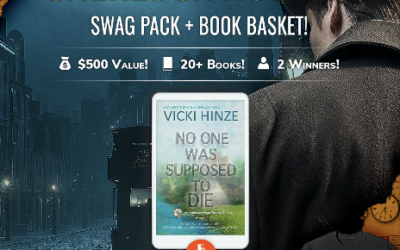©2003-2010, Vicki Hinze
Psychic Distance is the amount of emotional space you put between the reader and the character. Writers use psychic distance to manipulate the intensity of reader involvement in whatever event is occurring within a scene.
Largely, writers attempt to draw the reader in to experience the story firsthand. But there are times when the author doesn’t want the reader to experience an event firsthand, and yet the reader must know this information or this background in order for what is happening in the novel to make sense, or for the way a character is reacting to make sense. (Motivation disclosure.)
An easy-to-grasp example: Let’s say you’re writing a romance novel. Now you know that the primary focus of the novel must be on the development of the relationship between the hero and heroine. That’s the novel focus. But say your heroine had been a victim of rape at some time in the past. The rape certainly influences her motivations and actions now, yet you’re writing a love story. You don’t want the reader to be up close and experience the rape. So you, the writer, generate psychic distance to buffer the reader, so to speak. You make the reader aware of what happened and how it impacted (and continues to impact) the heroine, but you don’t make the reader relive the rape. Rape is not the novel focus.
Let me pull an actual psychic-distance shift from a published novel excerpt so you’ll see exactly what I mean. This excerpt is from Mary Higgins Clark’s BEFORE I SAY GOOD-BYE, page 118:
“Can I win? Nell wondered as she walked up Madison Avenue. Will you still feel that way when you find out Adam’s former employers are trying to throw the blame for their own bid rigging and bribery on Adam and Winifred?
It’s so easy to blame two people who aren’t around to defend themselves, she thought angrily. And so convenient.
Still, Nell realized that a persistent thought had been rattling around in her subconscious: Was it possible that Adam and Winifred were dead because they knew too much…”
Note that you’re inside Nell’s head (“Can I win?”), then you’re outside it, in the author’s company when the author tells you that Nell is wondering and walking up Madison Avenue. In paragraph three, (“Still, Nell realized”), the author again shifts the psychic distance. We’re not inside Nell’s head anymore. Now, we again have the author telling us what Nell is doing. There’s more figurative space, or psychic distance, between the reader and
the character.
I’ve been an avid fan of Ms. Clark’s for many years, but in my humble opinion, in this particular book–where psychic-distance shifts are made continually–the story suffers for it. The reason is that every time the reader attaches to the character, the author severs the attachment by shifting the psychic distance. Each shift interrupts the fictional dream and reminds the reader that s/he’s reading, which prohibits her/him from living the story.
So how do we eliminate the shifts, or narrow the psychic-distance focus? By closing the gaps and getting rid of the filters.
These filters, which are also known as “author intrusion,” (wondered, realized, and thought in the example) plant the author between the reader and character. So let’s ditch them, narrow the gap in the psychic distance, and see how it reads:
Can I win? Nell walked up Madison Avenue. Will I still feel that way when I find out Adam’s former employers are trying to throw the blame for their own bid rigging and bribery on Adam and Winifred?
It’s so easy to blame two people who aren’t around to defend themselves. And so convenient.
Still . . . A persistent thought rattled around in her subconscious. Was it possible that Adam and Winifred were dead because they knew too much…”
Now, let’s use this same example and widen the psychic distance–without filtering Nell’s thoughts through the author:
Could she win? Nell walked up Madison Avenue. Would she still feel that way when she found out Adam’s former employers were trying to throw the blame for their own bid rigging and bribery on Adam and Winifred?
It was so easy to blame two people who weren’t around to defend themselves. And so convenient.
Still . . . A persistent thought rattled around in her subconscious. Was it possible that Adam and Winifred were dead because they knew too much…?
Hopefully now you see (and feel) the difference in psychic distance in the examples. Note too that when the distance remains constant, the reader isn’t jarred or distracted.
This shift challenge is comparable to those created in “head-hopping” or constantly changing point of view (POV). Like POV shifts, psychic-distance shifts hold diverse expert opinions on when shifting should and should not be done. For that reason, I won’t cite suggested rules. (Any writing rule made can and has been broken.)
What I will share is a reminder that every time you switch POV characters, the reader needs a little time to settle in and attach to the new POV character. Too many shifts and you lose the reader, who no longer can attach and get emotionally involved in the story. The same holds true for psychic shifts. Too many continually jar the reader, remind her she’s reading, and prohibit her from living the fictional dream you’ve created.
That said, don’t be afraid to shift the psychic distance, (remember the case of the romance novel, where shifting is vital to the novel’s focus), but be judicious and make the shifts for a specific reason that strengthens the story.❖




